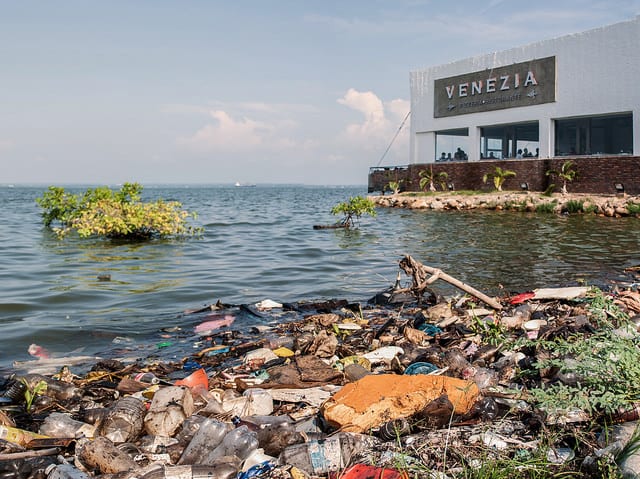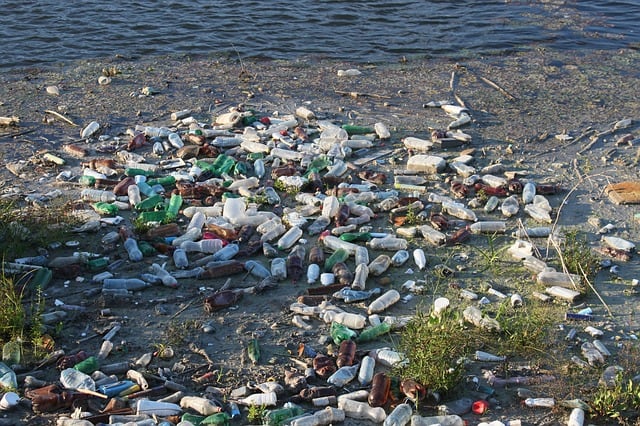What is Water Pollution?
What is Water Pollution?
The water they say is life, and indeed they were right. With about 70% of the earth’s cover being water, it undeniably becomes one of our greatest resources. As young students, we learned about the various ways to conserve water; coming to think of it, water is used in almost every important human chores and processes. It is an important element in both domestic as well as industrial purposes. However, a closer inspection of our water resources today, give us a rude shock.
Infested with waste ranging from floating plastic bags to chemical waste, our water bodies have turned into a pool of poison. In simple words, the contamination of water bodies means water pollution. Thereby the abuse of lakes, ponds, oceans, rivers, reservoirs, etc is water pollution. Pollution of water occurs when substances that will modify the water in a negative fashion are discharged in it. This discharge of pollutants can be direct as well as indirect.

Water pollution is an appalling problem, powerful enough to lead the world on a path of destruction. Water is an easy solvent, enabling most pollutants to dissolve in it easily and contaminate it. The most basic effect of water pollution is directly suffered by the organisms and vegetation that survive in water, including amphibians. On a human level, several people die each day due to consumption of polluted and infected water.
As per the Economist report (dated 2008) each day over 1000 children die of diarrheal sickness in India and the numbers have only increased alarming in the last five years. Water is polluted by both natural as well as man-made activities. Volcanic eruptions, earthquakes, Tsunamis, etc are known to alter water and contaminate it, also affecting ecosystems that survive under water.
Various Sources of Water Pollution
There are various classifications of water pollution. The two chief sources of water pollution can be seen as Point and Non-Point.
Point refers to the pollutants that belong to a single source. An example of this would be emissions from factories into the water.
Non-Point, on the other hand, means pollutants emitted from multiple sources. Contaminated water after rains that has traveled through several regions may also be considered as a Non-point source of pollution.
Various Causes of Water Pollution
1. Industrial waste
Industries produce a huge amount of waste which contains toxic chemicals and pollutants which can cause air pollution and damage to us and our environment. They contain pollutants such as lead, mercury, sulfur, asbestos, nitrates, and many other harmful chemicals.
Many industries do not have a proper waste management system and drain the waste in the fresh water which goes into rivers, canals and later into the sea. The toxic chemicals have the capability to change the color of water, increase the number of minerals, also known as eutrophication, change the temperature of water and pose a serious hazard to water organisms.
2. Sewage and wastewater
The sewage and wastewater that is produced by each household is chemically treated and released into the sea with fresh water. The sewage water carries harmful bacteria and chemicals that can cause serious health problems. Pathogens are known as a common water pollutant; The sewers of cities house several pathogens and thereby diseases.
Microorganisms in water are known to be causes of some very deadly diseases and become the breeding grounds for other creatures that act as carriers. These carriers inflict these diseases via various forms of contact onto an individual. A very common example of this process would be Malaria.
3. Mining activities
Mining is the process of crushing the rock and extracting coal and other minerals from underground. These elements when extracted in the raw form contains harmful chemicals and can increase the number of toxic elements when mixed up with water which may result in health problems. Mining activities emit a large amount of metal waste and sulphides from the rocks which is harmful to the water.
4. Marine dumping
The garbage produced by each household in the form of paper, aluminum, rubber, glass, plastic, food is collected and deposited into the sea in some countries. These items take from 2 weeks to 200 years to decompose. When such items enter the sea, they not only cause water pollution but also harm animals in the sea.
5. Accidental oil leakage
Oil spill poses a huge concern as a large amount of oil enters into the sea and does not dissolve with water; thereby opens problem for local marine wildlife such as fish, birds and sea otters. For e.g.: a ship carrying a large quantity of oil may spill oil if met with an accident and can cause varying damage to species in the ocean depending on the quantity of oil spill, size of the ocean, the toxicity of pollutant.
6. The burning of fossil fuels
Fossil fuels like coal and oil when burnt produce a substantial amount of ash in the atmosphere. The particles which contain toxic chemicals when mixed with water vapor result in acid rain. Also, carbon dioxide is released from the burning of fossil fuels which result in global warming.
7. Chemical fertilizers and pesticides
Chemical fertilizers and pesticides are used by farmers to protect crops from insects and bacterias. They are useful for the plant’s growth. However, when these chemicals are mixed up with water produce harmful for plants and animals. Also, when it rains, the chemicals mix up with rainwater and flow down into rivers and canals which pose serious damages for aquatic animals.

8. Leakage from sewer lines
A small leakage from the sewer lines can contaminate the underground water and make it unfit for the people to drink. Also, when not repaired on time, the leaking water can come on to the surface and become a breeding ground for insects and mosquitoes.
9. Global warming
An increase in earth’s temperature due to the greenhouse effect results in global warming. It increases the water temperature and results in the death of aquatic animals and marine species which later results in water pollution.
10. Radioactive waste
Nuclear energy is produced using nuclear fission or fusion. The element that is used in the production of nuclear energy is Uranium which is a highly toxic chemical. The nuclear waste that is produced by radioactive material needs to be disposed of to prevent any nuclear accident. Nuclear waste can have serious environmental hazards if not disposed of properly. Few major accidents have already taken place in Russia and Japan.
11. Urban development
As the population has grown, so has the demand for housing, food, and cloth. As more cities and towns are developed, they have resulted in increasing use of fertilizers to produce more food, soil erosion due to deforestation, increase in construction activities, inadequate sewer collection, and treatment, landfills as more garbage is produced, increase in chemicals from industries to produce more materials.
12. Leakage from the landfills
Landfills are nothing but a huge pile of garbage that produces the awful smell and can be seen across the city. When it rains, the landfills may leak and the leaking landfills can pollute the underground water with a large variety of contaminants.
13. Animal waste
The waste produced by animals is washed away into the rivers when it rains. It gets mixed up with other harmful chemicals and causes various water-borne diseases like cholera, diarrhea, jaundice, dysentery and typhoid.
14. Underground storage leakage
Transportation of coal and other petroleum products through underground pipes is well known. Accidentals leakage may happen anytime and may cause damage to the environment and result in soil erosion.
Water pollutants also include both organic and inorganic factors. Organic factors include volatile organic compounds, fuels, waste from trees, plants etc. Inorganic factors include ammonia, chemical waste from factories, discarded cosmetics etc. The water that travels via fields is usually contaminated with all forms of waste inclusive of fertilizers that it swept along the way. This infected water makes its way to our water bodies and sometimes to the seas endangering the flora, fauna and humans that use it along its path.
The current scenario has led to a consciousness about water preservation and efforts are being made on several levels to redeem our water resources. Industries and factory set-up’s are restricted from contaminating the water bodies and are advised to treat their contaminated waste through filtration methods. People are investing in rainwater harvesting projects to collect rainwater and preserve it in wells below ground level.
Water Pollution is common, and is an area of high alert. Water needs to be preserved and respected today, for us to live a tomorrow.

No comments